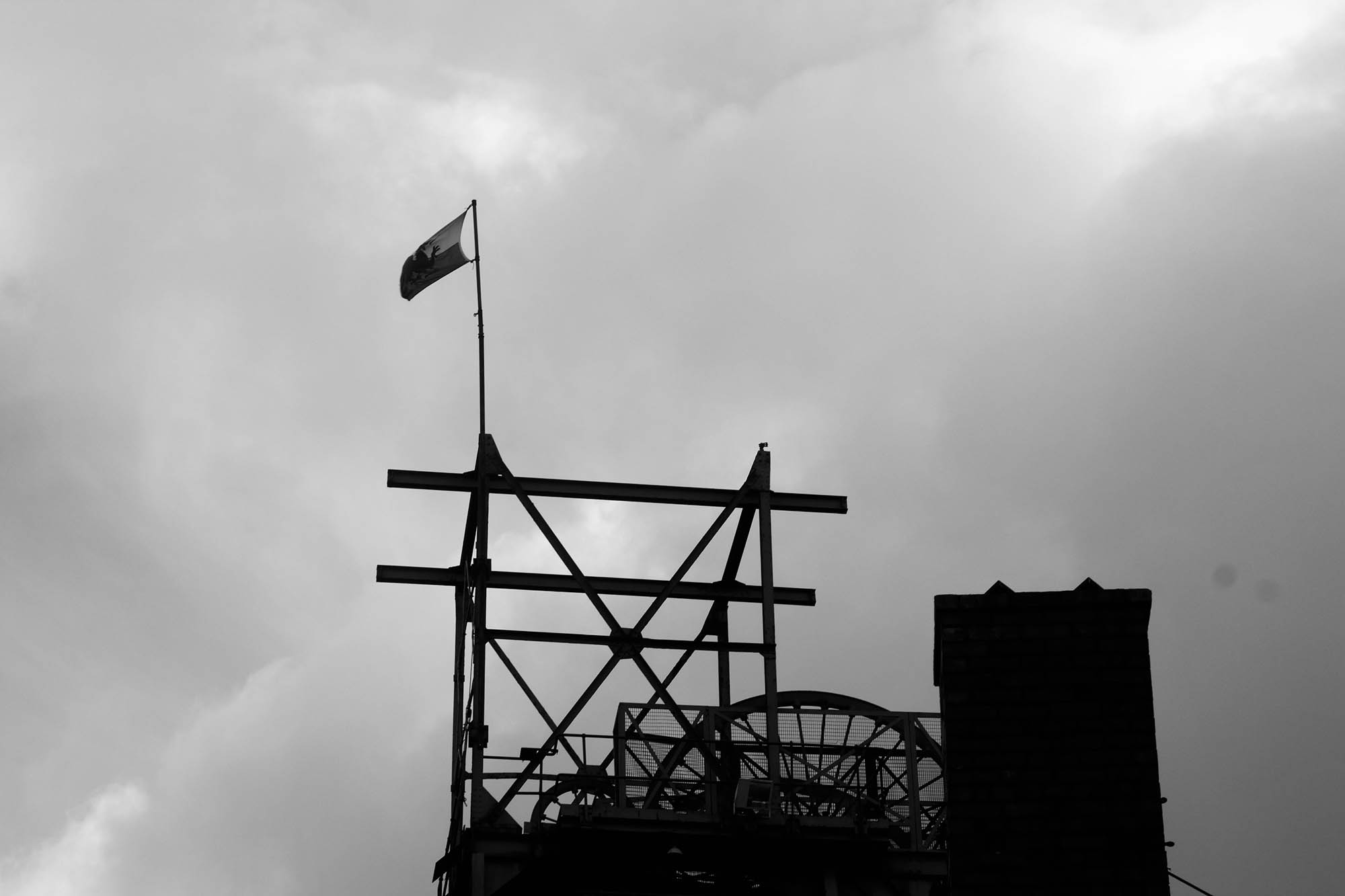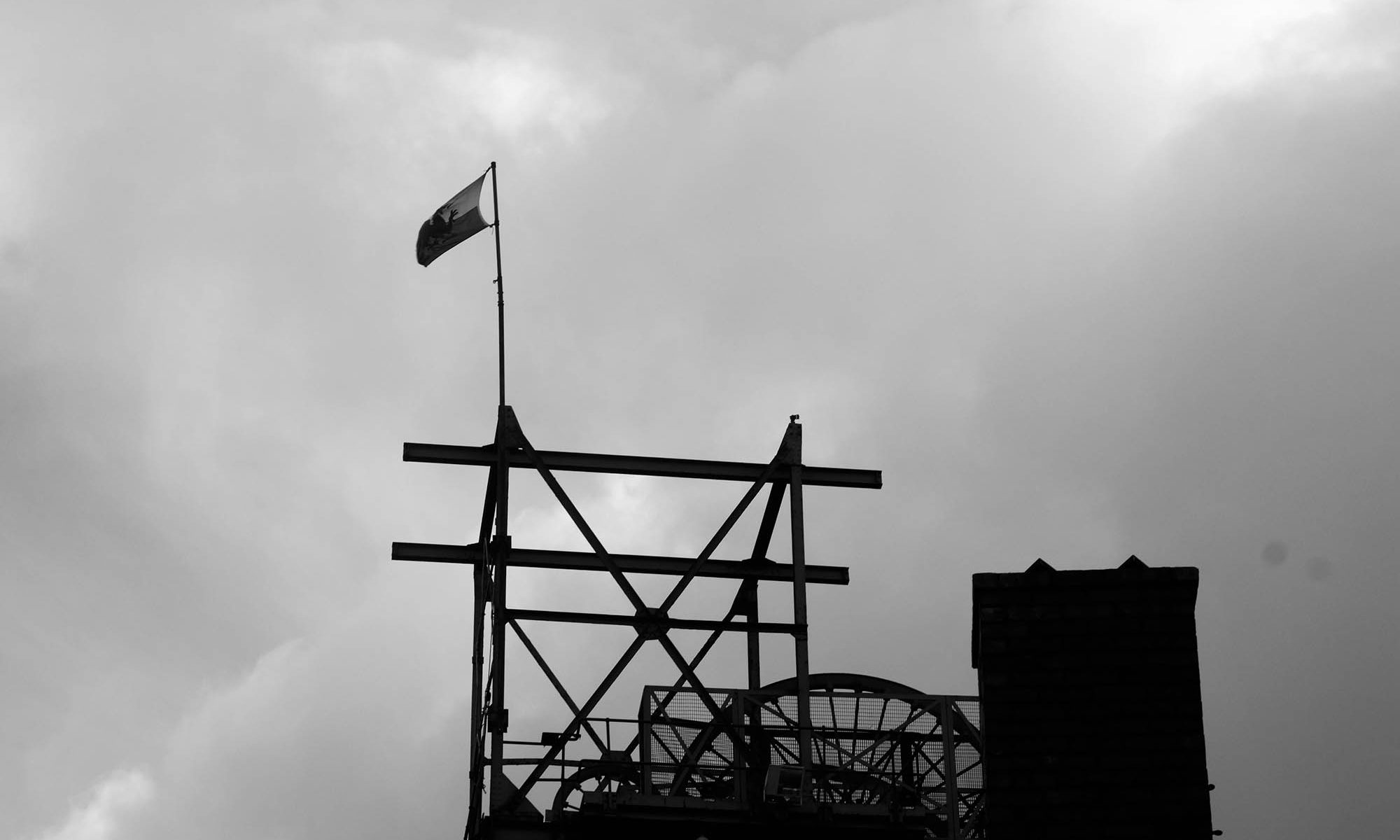Jules Bishop’s latest installation, ‘Goal No Coal: Not Bigger Than Us’ (2019), anchors protest within a liminal period of historical social change during the 1980’s to the here and now. The original nucleus, a picket-line caravan with slogans protesting the closure of the coal mines, is contemporized to reflect an ironic portrayal of today’s climate change fight against the continued use of fossil fuels. Margaret Thatcher, the visionary eco-warrior… As part of a site-specific installation at the Henley Women’s Regatta, Bishop addresses the town council’s imminent decision on declaring a climate emergency, and local concerns anchor the project on a spatial and temporal level. Michael Heseltine was the MP for Henley-on-Thames when, as Minister for the Environment, he declared the closure of 31 coal pits in one day. Linked continuity with the town deepens the impact and connection of this piece. Global uproar, with regards to the climate emergency challenges ahead, project the installation to the international make-up of the Regatta. Protest signs from around the world envelop the nucleus and highlight the human response of agency and action during a period of liminality. Mark Wallinger’s artwork, State Britain, 2007 has inspired this piece along with Liberate Tate’s performance, Human Cost, 2011.
Liminality, in the traditional ethnological and anthropological sense, denotes the Van Gennep/Turner transformational moment in lives; birth, coming of age, ‘marriage’ and death. 1000 years previous, Anglo-Saxon artwork depicted this passage as the ‘disappearing Christ’ whereby only his lower limbs were visible as he crossed the threshold between life and death. Parallel iconographies also exist in Eastern traditions. The ‘betwixt and between’ is a state of being which is neither this nor that. The duration of said moment can vary. Gender reassignment, menopause, puberty, Brexit. In otherwords, liminality can be appropriated to any transformational stage, from the Duchamp/Burden ultrathin shot of a gun, (described as that moment between the sound of a gun being fired and seeing the mark of the bullet appear on a target),to what we now address, the liminal phase of climate change. In the ‘betwixt and between’ there will always be a tipping point whereby there is no return. Push a ball up a hill, at some point it will roll down the other side. With regards to climate change, on the other side, chaos theory prevails, no prediction on domino-effects are predictable or imaginable. Data-saturated, we are warned where such tipping points could be. We are also given hope that we could stop the ball from getting to the top of the hill. The agency to do this is still within grasp.
The social, participatory nature of this work, visceral in its approach, attempts to challenge the boundaries of the gallery walls. This piece affords itself to growth and the audience are to be invited to add their views, make their opinions seen and heard, by means of visually adding to the installation. Time-lapsing, the piece will evolve over the course of the event as documented on Instagram @artjules2019. The installation runs for the duration of the Henley Women’s Regatta, from Friday 21stJune to Sunday 23rdJune 2019.

